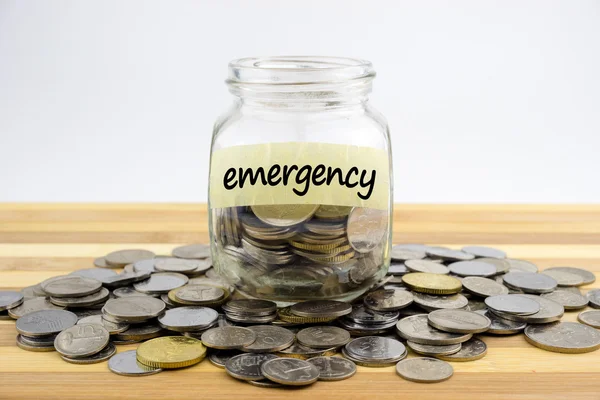The Importance of Financial Preparedness
In the current socio-economic landscape, being financially prepared is not just wise; it’s essential. Financial preparedness protects you against unforeseen circumstances that could otherwise derail your economic stability. This reserve offers immense peace of mind, allowing you to meet unexpected expenses head-on. It’s the difference between navigating emergencies confidently and being overwhelmed by financial calamity. By establishing an emergency savings fund, you equip yourself with a vital financial safety net, letting you handle life’s unpredictabilities without unnecessary distress. Moreover, building this fund enhances your financial literacy and encourages a habit of disciplined saving, setting a strong foundation for more complex financial goals.
What is an Emergency Savings Fund?
An emergency savings fund is a dedicated pool of money to cover sudden financial demands such as unforeseen medical bills, unexpected home repairs, or abrupt job losses. This fund is separate from regular savings and is intended solely for emergencies. In contrast to savings used for planned expenses—like vacations or home improvements—this fund stays intact until a legitimate emergency arises. Such readiness allows you to deal with life’s surprises without plunging into debt or sacrificing essential expenses. It’s about building a substantial financial buffer to handle immediate financial shocks while safeguarding your long-term economic health. Crafting a detailed plan that prioritizes saving money for emergency fund bolsters your ability to make sound financial decisions, offering security and stability amid volatility. Saving money for emergency funds is one of the most strategic moves toward financial security.
Why You Need One
- Life’s Unpredictability: Emergencies come without warning, highlighting the need for a financial buffer to cushion such shocks.
- Avoiding Debt: An emergency fund helps avoid accruing high-interest debt, as you won’t have to rely on credit cards or loans during a crisis.
- Peace of Mind: The mental comfort of knowing you have financial coverage in emergencies significantly reduces stress.
- Endurance in Economic Downturns: During broader economic challenges, having a personal financial cushion can offer additional protection against layoffs or other income reductions.
How Much Should You Save?
Determining the precise amount to save is pivotal in building a robust emergency fund. Financial experts frequently recommend a fund containing three to six months of living expenses. This range provides a comfortable cushion capable of absorbing the economic blow from unexpected life events. The exact amount should reflect your unique financial situation, including the stability of your income, monthly expenses, and personal lifestyle. Start by setting modest savings goals. Even a tiny fund increases your financial security and helps establish saving habits. Incrementally increasing your contributions will nurture a significant fund, further empowering your financial decisions.
Finding Your Personal Savings Goal
Your savings goal should be carefully calculated based on your monthly obligations—rent, utilities, groceries, and essential bill payments. As your lifestyle, family size, or employment status changes, it’s critical to reassess and adjust your savings target accordingly. Calculating a personalized savings goal ensures the fund meets your specific needs. This tailored approach enhances its effectiveness in offering absolute security against financial shocks, ensuring economic resilience. Moreover, having a personalized fund fosters confidence in managing different financial situations, preparing you for expected and extraordinary expenditures.
Strategies for Building Your Fund
Building a substantial emergency fund is within everyone’s reach with the right strategies. Here are some practical methods for accumulating a healthy financial buffer over time.
Automatic Transfers
Automated transfers are the most seamless saving method, ensuring consistent fund growth with minimal effort. By setting up automatic monthly transfers from your checking to a dedicated savings account, you commit to saving without daily involvement. This method simplifies the saving process and reduces the temptation to dip into these funds for non-emergencies. You can also set specific dates or paycheck intervals to align your transfers, making the process as unobtrusive as possible.
Curb Unnecessary Spending
Scrutinize your spending behavior to trim excess expenses. Small, frequent expenditures can quickly add up, detracting from your savings ability. Eliminating or reducing discretionary expenses, such as frequent dining out or unused subscriptions, can significantly boost your emergency fund. Redirecting these funds to savings magnifies the growth of your financial safety net, providing more robust coverage in emergencies. Track your spending patterns weekly or monthly to identify areas for improvement, fostering mindfulness about your financial health.
Maintaining Your Emergency Fund
Like any financial endeavor, maintaining your emergency fund requires discipline and foresight. Once amassed, the fund should be protected and nurtured to guarantee its availability in true emergencies. Regular monitoring and adjustment to your financial goals can align the fund with your current needs.
Avoid Dipping Into Your Fund
Commit to using your emergency fund strictly for emergencies. This discipline prevents depletion, ensuring it’s fully available when needed most. Policing yourself against unnecessary withdrawals is essential for preserving the fund’s effectiveness and your peace of mind. By defining criteria that categorize an emergency, you can differentiate between urgent and non-urgent expenses and guard your fund against accidental diminishment.
Using Your Emergency Fund Wisely
Ensuring you’re using your emergency savings correctly is as important as saving them. Reserve these funds for critical expenses that fall outside your planned budget. Proper usage protects your financial future while effectively addressing immediate needs. Prioritizing expenses that impact your ability to maintain employment or health should be at the forefront of legitimate uses.
Examples of Legitimate Uses
- Unexpected Repairs: Major car or home repairs that impact daily functioning qualify as justifiable fund uses.
- Job Loss: Income gaps due to job loss necessitate tapping into the fund to cover living expenses.
- Medical Expenses: Emergencies involving significant healthcare expenditures are legitimate reasons to utilize your fund.
- Natural Disasters: In the case of environmental events that damage property or disrupt income, having ready funds is invaluable.
This insightful article about the economic impacts of emergencies provides a more thorough understanding of the financial ramifications of sudden expenses.
Conclusion: Securing Your Financial Future
The steps you take today can significantly impact your financial resilience tomorrow. Establishing and preserving an emergency savings fund is practical and crucial for ensuring long-term economic health. Through realistic goal-setting, disciplined savings practices, and prudent fund usage, you can build a solid financial foundation capable of weathering unforeseen financial storms, positioning yourself to face life’s unpredictable challenges confidently. A well-built fund offers immediate relief during emergencies and educates and prepares you for broader financial management pursuits. Explore this guide on building emergency funds to explore the benefits and strategies further.



